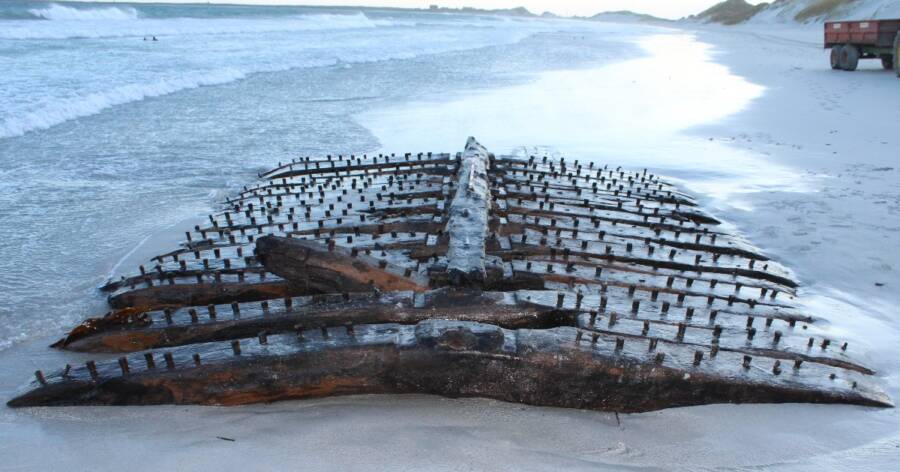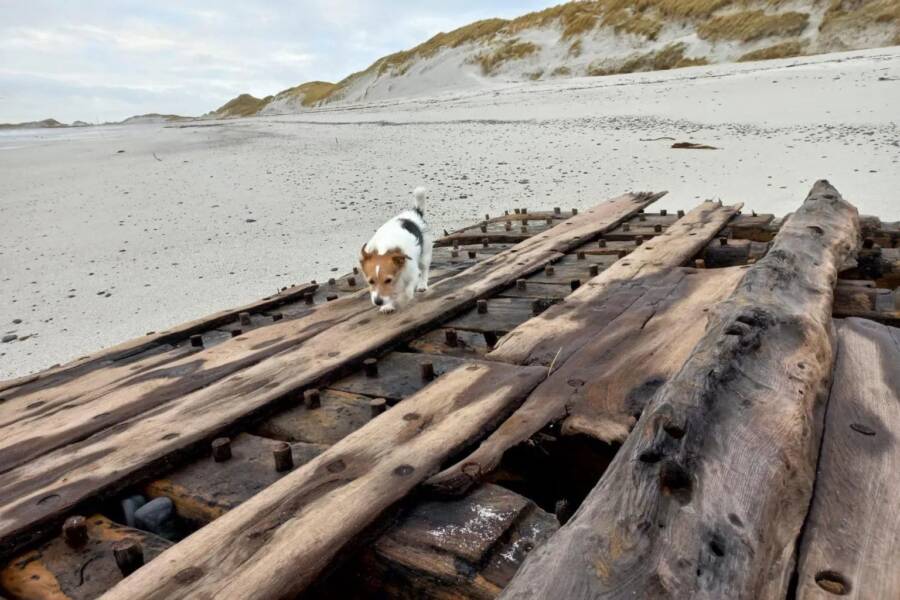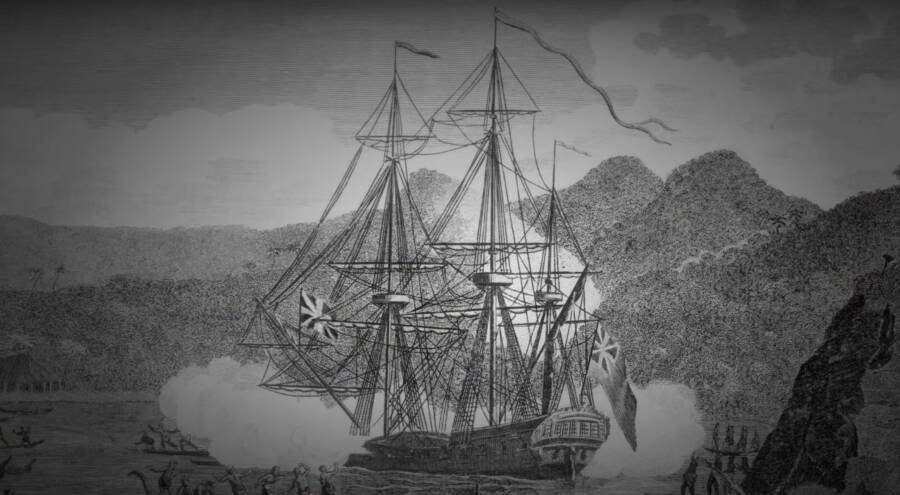The shipwreck found on Scotland's Orkney Islands has been identified as the Earl of Chatham, an 18th-century whaling ship that was once a Royal Navy vessel called the HMS Hind.

Wessex Archaeology/FacebookThe shipwreck shortly after its discovery in 2024.
In 2024, one of the wild storms that made the island of Sanday in the Orkneys “the cradle of shipwrecks in Scotland” whipped up off the coast. But instead of sinking a ship, this storm delivered one from the depths. When the skies cleared, Sanday locals discovered a centuries-old shipwreck on the beach. And now, experts have identified it.
Archaeologists believe that the vessel that appeared on the shores of Sanday had a long career as both a Royal Navy vessel and a whaling ship. Called the HMS Hind and the Earl of Chatham, it had an action-packed life before it wrecked in the Bay of Lopness back in 1788.
The Shipwreck Found On Sanday
The shipwreck was first discovered in February 2024, when a schoolboy going for a run along a local beach spotted the sea-soaked timbers on Sanday, one of the islands of Orkney in northern Scotland.

David WalkerA photo of the shipwreck taken by a local resident, featuring his dog Ned.
According to Wessex Archaeology, which was called in to investigate the wreck, the midship section of the hull had washed upside down onto the beach, with its “degraded keel” still visible. Treenails, or wooden pegs, were used to fasten the planks together, which suggests that the ship was built between the 16th and 19th centuries. Archaeologists suspected that the vessel was most likely constructed between the 17th and 18th centuries.
By using dendrochronology to analyze the tree rings on the planks, archaeologists were able to further narrow down the ship’s construction date. Some of the trees used to build the ship were felled between 1748 and 1762, and others between the 1750s and 1780s. Analysis of the wood also suggested that the trees came from the south and southwest of England.
From there, archaeologists pored over historical records and archives to determine the identity of the ship. Now, according to a Wessex Archaeology press release, they’ve honed in on the identity of the Sanday shipwreck.
“All available evidence points to the wreck being the Earl of Chatham,” the press release explains, “a London whaling ship that had another life as a Royal Navy vessel called HMS Hind before it became a whaler.”
The Rise And Fall Of The ‘Earl Of Chatham’

Wessex Archaeology/YouTubeArchaeologists determined that the ship was likely the Earl of Chatham, also known as the HMS Hind.
As Wessex Archaeology reports, the ship was built in 1749 for the Royal Navy and named the HMS Hind. A 24-gun frigate, the ship was not a massive battleship but a smaller, more agile vessel that likely acted as a “convoy escort or a counter-privateer cruiser.” It saw action in the sieges of Louisbourg and Quebec in the 1750s as well as in the Revolutionary War.
In 18th-century Britain, “war and whaling went hand-in-hand,” according to Wessex Archaeology, and the HMS Hind was quickly transformed into a whaling vessel after it was decommissioned as a military ship. Dubbed the Earl of Chatham, the ship spent four seasons in the Arctic hunting whales in order to fill the growing demand for blubber, which was used as machinery lubricant and fuel for lamps and streetlights. The vessel hunted Greenland right whales, or bowhead whales, and successfully killed 19 under the leadership of whaler William Brown between 1784 and 1787.
But the seafaring days of the Earl of Chatham came to a sudden end on a spring day in March 1788. Then, while sailing north from London, the ship wrecked in the Bay of Lopness off the coast of Sanday following a violent storm. Though at least one newspaper at the time reported that the ship was “totally wrecked,” all 56 crew members managed to survive.
Now, more than two centuries later, the ship’s timbers are being preserved in a freshwater tank. At some point, it will likely be put on permanent display.
As such, the shipwreck found on Sanday represents the island’s long maritime past. As Wessex Archaeology notes, the island was called the “cradle of shipwrecks in Scotland.” But its locals also gained a reputation for “helping survivors” who stumbled out of wrecks and onto Sanday’s shores. Ultimately, “the island gained a reputation not just as a hazard but as somewhere hospitable to sailors who fell afoul of the stormy seas.”
After reading about the 18th-century shipwreck that was just identified in Scotland, discover the stories of some of history’s most famous shipwrecks. Or, learn about these infamous sunken ships from around the world.





